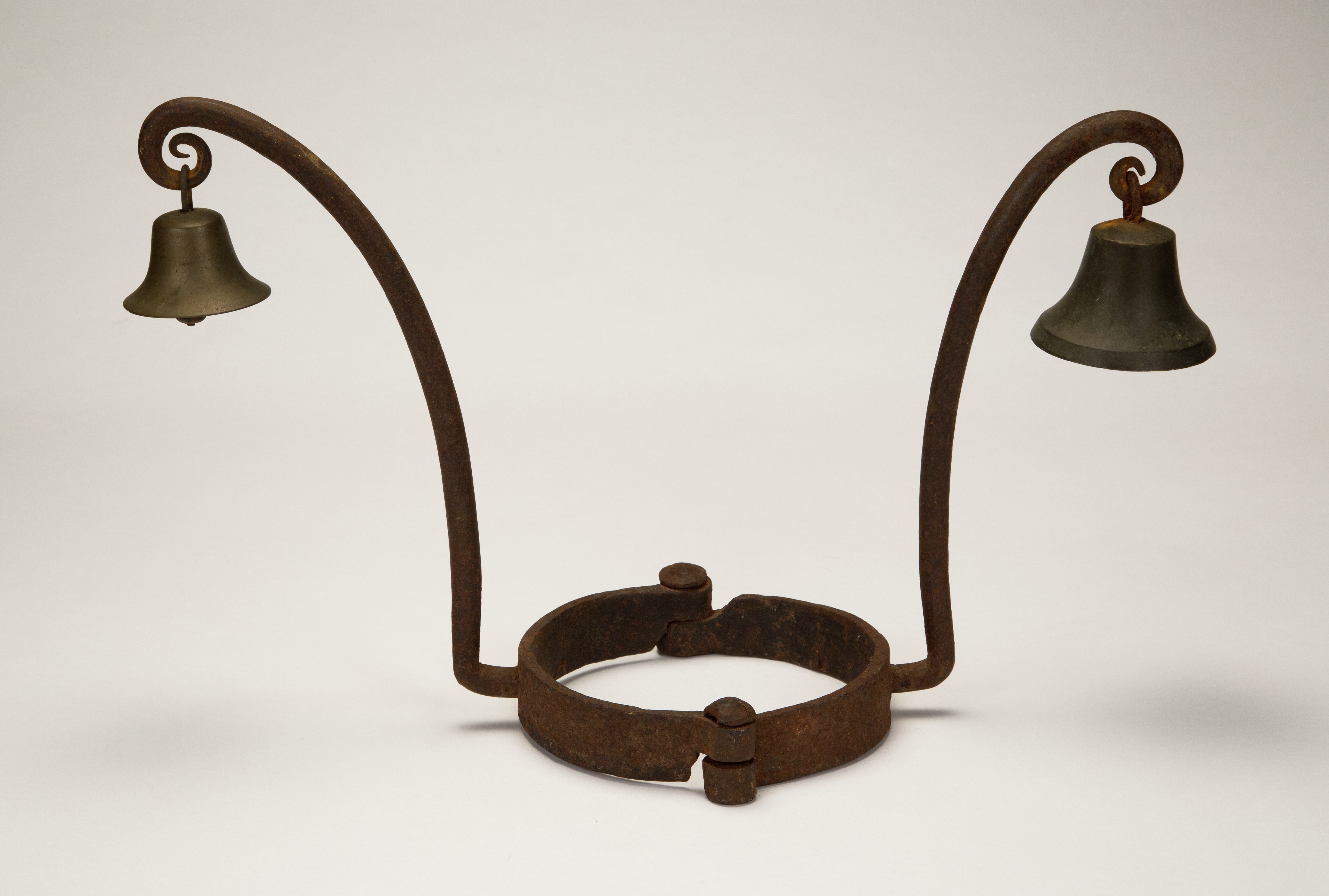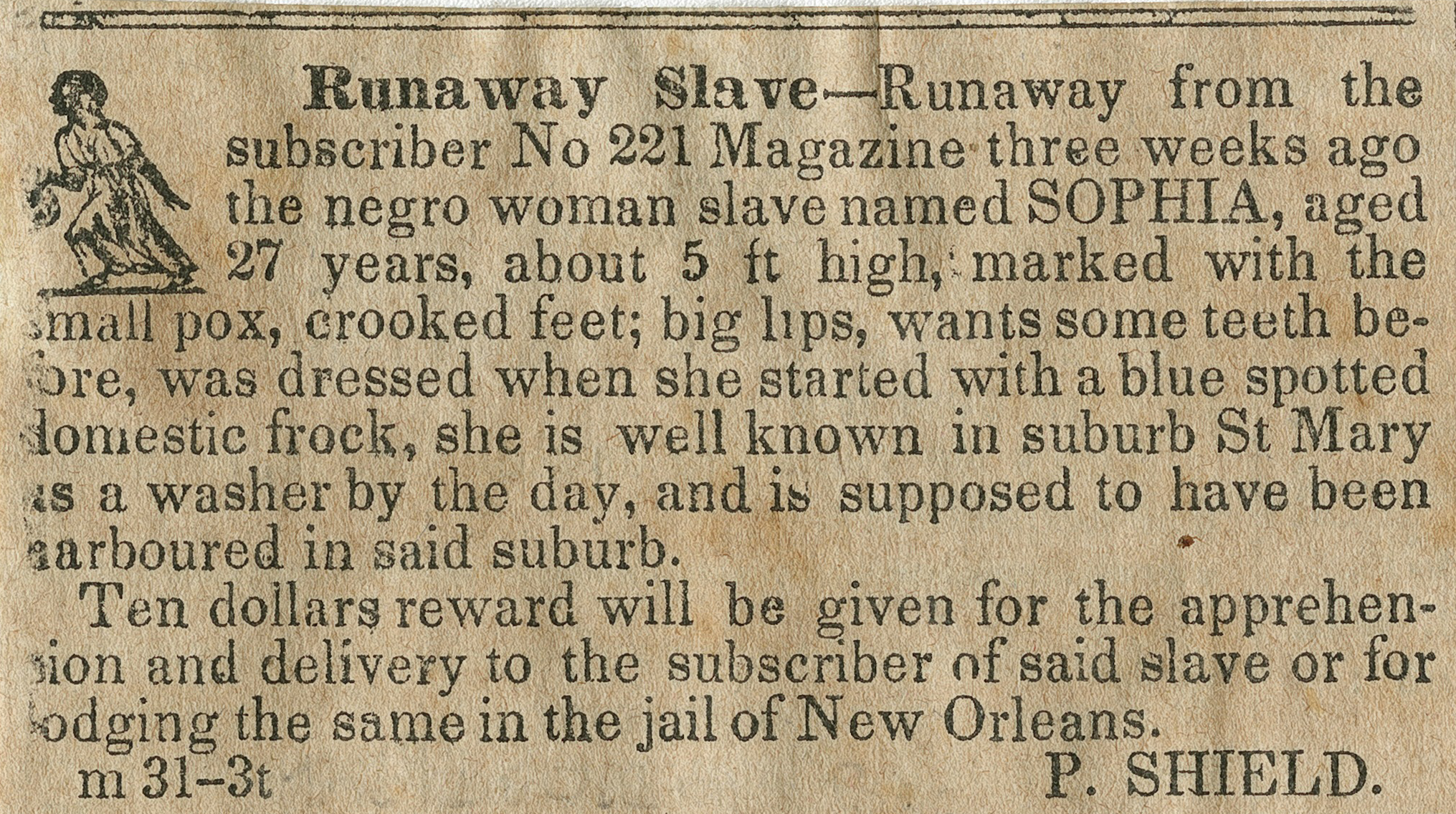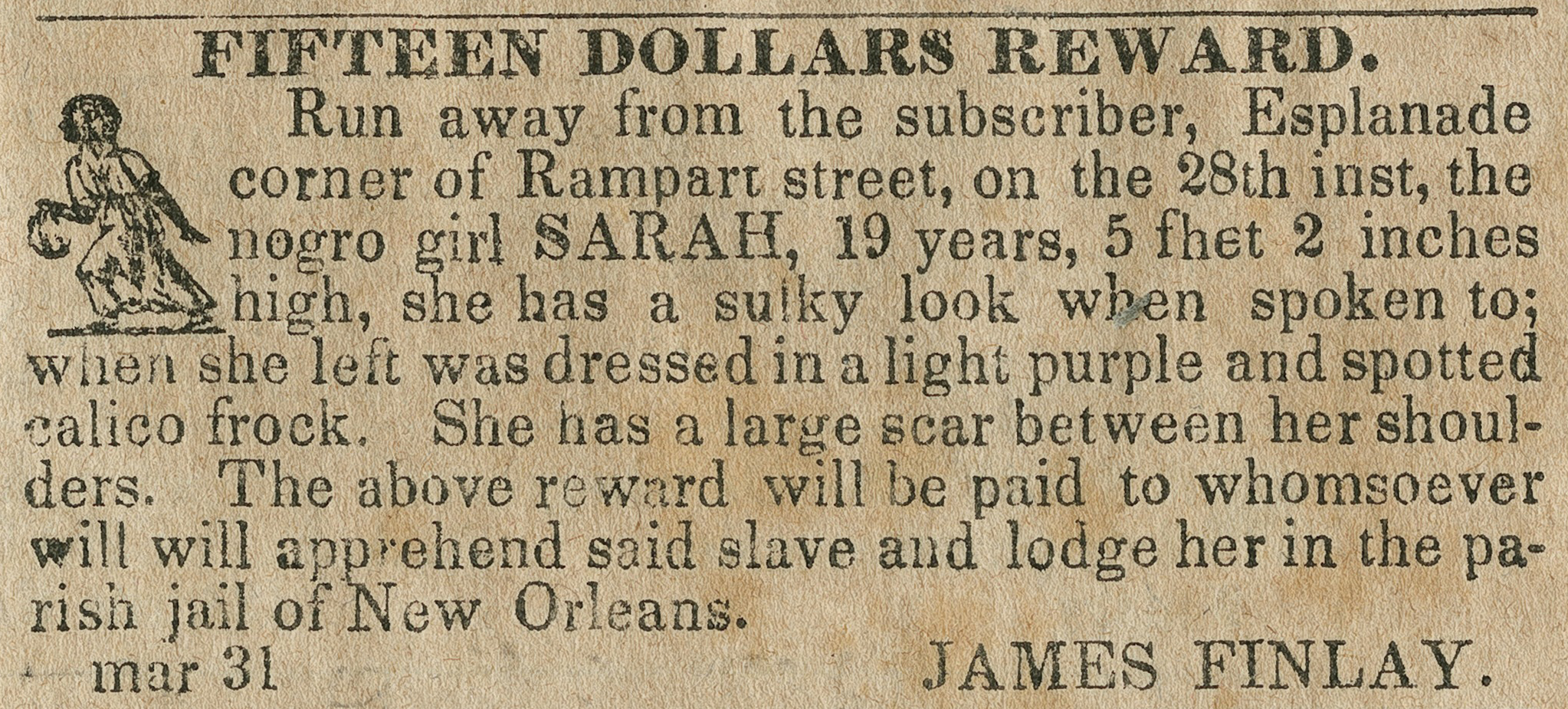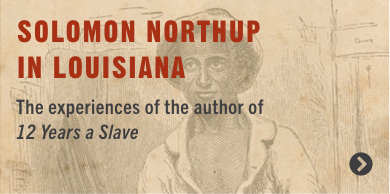Runaway slave advertisements were a regular feature in antebellum newspapers. Though the penalties for running away could be horrific—whipping, branding, maiming, and the forced donning of heavy iron collars—some individuals risked punishment and separation from their families in hopes of escaping bondage, if only for a short time. Strict laws limiting slaves' activities—including prohibitions on learning to read, write, or even swim—made running away difficult, while the presence of roving slave patrols and the sheer physical distance between slavery and freedom doomed most escape attempts.
Runaway ads make clear that the most frequent impetus for an enslaved person to run involved the possibility or reality of being sold. Those who caught wind of an impending sale often tried to avoid that fate by absenting themselves. Similarly, individuals recently sold—whether five or five hundred miles away from their former home—often ran away in an effort to return to loved ones lost.

Slave collar with bells
between 1800 and 1865
iron and brass
courtesy of the Holden Family Collection

Advertisement for Sophia, "well known in suburb St Mary as a washer"
April 2, 1836
THNOC, 1974.25.23.6.3

Advertisement for Sarah, "has a sulky look when spoken to"
April 2, 1836
THNOC, 1974.25.23.6.3

Advertisement for John and Anfield, "detained in the jail of the parish of Jefferson"
April 2, 1836
THNOC, 1974.25.23.6.3

Advertisement for Frances, "stout, good looking, and has quite a round face"
September 18, 1851
THNOC, 1974.25.23.7

Advertisement for Bob and Charloe, "believed…decoyed off by a man who ran a trading boat up and down the coast"
from the New Orleans Daily Picayune,
August 14, 1851
THNOC, 1974.25.23.7

